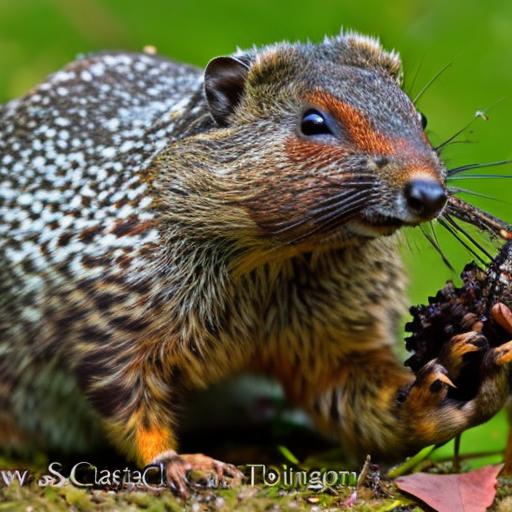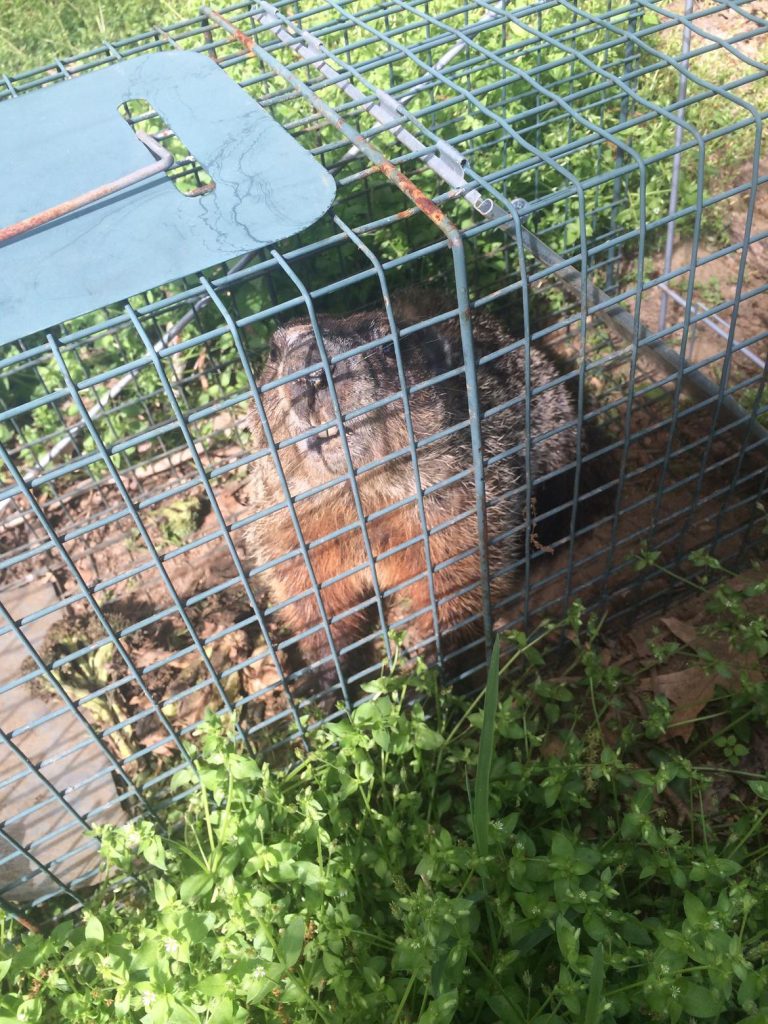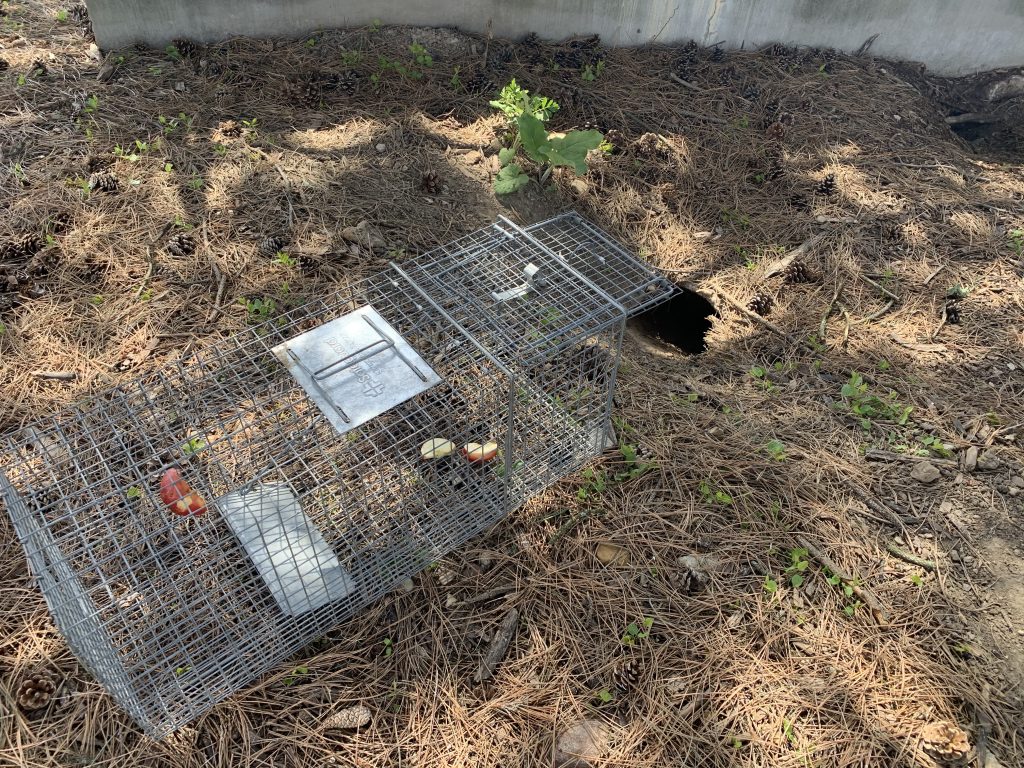Your cart is currently empty!

Game Changer: The Ultimate Guide on How to Catch a Woodchuck in a Trap!

Table of Contents
Introduction
Ah, the thrill of the hunt! Whether you’re a seasoned pro or just starting out, there’s always something exhilarating about setting a trap and waiting for that moment of triumph. But let’s get one thing straight – mastering the art of trapping isn’t just about the catch; it’s about understanding your prey, knowing their habits, and outthinking them. I remember one crisp morning when I was challenged with the task of figuring out how to catch a woodchuck in a trap. The creature’s cunning surprised me and made the eventual success even more rewarding. The woodchuck, often overlooked by many hunters, can teach us invaluable lessons in patience and strategy. Understanding their behavior, their routines, and their quirks is the key. This guide aims to equip you with the knowledge and tools to not only know how to catch a woodchuck in a trap but to do so efficiently, ethically, and safely.
Understanding the Woodchuck – Habits, Habitat, and Behavior
Habitat:
Woodchucks, also known as groundhogs, are primarily burrowing rodents, often found in North America. They prefer open country and the edges of woodland, and they can also adapt to environments disturbed by humans. It’s not uncommon to find them in fields, pastures, and even around homes where they might set up their burrows in gardens or under sheds. They dig extensive burrow systems that serve as their homes, places of hibernation, and even as escape routes when threatened.
Recognizing where woodchucks are likely to reside is fundamental in setting up a successful trap. Ideally, you’d want to place your trap near active burrow entrances. Look for mounds of dirt, which are indicative of an entrance or exit point to their burrow system. Another hint is their droppings or evidence of their herbivorous diet, such as eaten plants or crops.
Daily Habits:
One of the most critical factors in knowing how to catch a woodchuck in a trap is understanding their daily routine. Woodchucks are diurnal, meaning they’re most active during the early morning and late afternoon. If you’re setting a trap, these are the prime times, as it’s when they’ll typically emerge from their burrows in search of food. Their diet mainly consists of greens, so if you spot an area in your garden where plants have been munched on, that’s a good indication of woodchuck activity.
Additionally, woodchucks hibernate. So, if you’re planning on trapping during the colder months, you might be disappointed. They typically go into hibernation around October and emerge around February, depending on the climate of the region. This means spring and summer are the most effective times to try and catch a woodchuck in a trap.
Behavioral Traits:
Woodchucks are cautious creatures. They always keep an eye out for predators, which means they can often spot you before you see them. They have sharp senses, especially their hearing and vision. If they sense any danger, their first instinct is to retreat to their burrows. This behavior can be a double-edged sword for trappers. On one hand, their cautious nature can make them hard to approach. On the other, if you’ve located their burrow and set your trap well, their predictable behavior can play right into your hands.
Another behavior to note is their tendency to stand on their hind legs to check their surroundings, often referred to as “whistle-pig” due to the high-pitched whistle they might give as an alarm to others. If you notice this behavior, it’s an indication that they’ve sensed something amiss.
In conclusion, while they might seem like simple creatures, woodchucks are crafty and have evolved several behaviors to ensure their survival. Understanding these behaviors is vital for any hunter wishing to know how to catch a woodchuck in a trap. By leveraging this knowledge, coupled with patience and the right equipment, you’ll be well on your way to becoming a master trapper. Remember, the more you understand your prey, the more successful you’ll be in your endeavors.
Essential Equipment – Tools of the Trade
Choosing the Right Trap:
When embarking on your quest to catch a woodchuck, selecting the appropriate trap is paramount. There are several types of traps available on the market, each with its distinct advantages and drawbacks.
- Live Cage Traps: These are the most commonly used traps for woodchucks. They’re designed to capture the animal without causing harm. They usually come in a rectangular shape with a trigger mechanism. Once the woodchuck enters the trap to access the bait, the mechanism is activated, closing the door behind it. The key advantage is its humane approach – you can later decide to relocate the trapped animal. However, these traps can be bulkier and may require regular checking to ensure the animal doesn’t suffer from stress or dehydration.
- Body Gripping Traps: Less commonly used for woodchucks, these traps are designed to kill the animal instantly. They’re more suited for hunters looking to trap woodchucks for their fur or meat. While effective, they are less humane and might not be the best choice for those looking to simply remove the woodchuck from their property.
- Pitfall Traps: This involves digging a deep hole which the woodchuck can fall into but not escape from. This method is not widely recommended due to its inherent risks to other wildlife and even pets.

For those new to trapping, live cage traps offer a humane and effective method to catch a woodchuck. Regardless of your choice, always ensure the trap is appropriately sized for a woodchuck to avoid causing unnecessary stress or injury.
Baiting Essentials:
The perfect bait can significantly increase your success rate when trying to catch a woodchuck in a trap. Woodchucks are primarily herbivores with a penchant for fresh vegetables. Here are some baits that woodchucks find hard to resist:
- Fresh lettuce
- Sweet corn
- Peas
- String beans
- Broccoli
To make your bait even more tempting, try using fruits like strawberries or slices of watermelon. When setting up your bait, place it strategically at the back of the trap, ensuring the woodchuck has to fully enter the trap to reach it. This ensures the triggering mechanism works correctly.
Safety First:
Trapping may seem straightforward, but it comes with its set of risks. Here are some safety precautions every hunter should consider:
- Personal Protective Gear: Always wear gloves when handling traps. Not only does this protect you from potential bites or scratches, but it also prevents your scent from contaminating the trap, making it less appealing to woodchucks.
- Safe Handling: If you’ve used a live trap, approach the cage calmly to avoid stressing the animal. When relocating, choose a location far from residential areas and ensure it’s a suitable habitat for the woodchuck.
- Awareness: Be conscious of local wildlife laws and regulations. Some regions may have specific guidelines or seasons for trapping woodchucks.
- Well-being of the Animal: If using live traps, ensure the trapped woodchuck is not exposed to extreme weather conditions, and check traps frequently to minimize their confinement time.
In summary, the right equipment combined with the appropriate bait and safety precautions can significantly enhance your success in catching a woodchuck in a trap. With these tools and insights at your disposal, you’re well on your way to becoming an expert trapper.
Step-by-Step Guide to Setting and Checking Your Trap
Selecting the Perfect Spot:
Location is the linchpin to success when it comes to trapping. When looking for a spot to set up your trap, you want to focus on areas where woodchuck traffic is highest. Here are some tips:
- Observe: Spend some time watching from a distance. Woodchucks are creatures of habit and often use the same paths to move between their burrow and feeding areas.
- Signs of Activity: Look for fresh mounds of dirt, which may indicate recent burrowing activity. Eaten plants or crops, woodchuck droppings, and well-trodden paths can also give away their presence.
- Close to the Burrow: Setting the trap near the entrance of an active burrow can increase your chances, but ensure it doesn’t block the path, causing the woodchuck to bypass it.
Prepping the Ground:
Once you’ve identified the perfect location, it’s essential to prepare the ground effectively. This will not only help stabilize the trap but can also make it more enticing for a woodchuck.
- Flatten the Area: Make sure the ground is level. A wobbly trap can spook a woodchuck and prevent it from entering.
- Natural Setting: Try to make the area around the trap appear as natural as possible. Disguise it with some nearby dirt or vegetation. The goal is to make the trap seem like a non-threatening part of the environment.
- Clear Path: Ensure there are no obstructions that might divert the woodchuck away from your trap.
Setting the Trap:
With the ground prepped, it’s time to set up your trap. Here’s a detailed step-by-step guide:
- Positioning: Place your trap in the chosen spot, ensuring it’s stable.
- Bait Placement: Remember, woodchucks are herbivores. Fresh vegetables or fruits (like lettuce, sweet corn, or strawberries) can be highly effective. Ensure the bait is placed deep within the trap, encouraging the woodchuck to enter fully.
- Setting the Trigger: Every trap has a triggering mechanism. Familiarize yourself with yours and ensure it’s sensitive enough to close once the woodchuck is inside.
- Camouflage: Disguising the trap can increase its effectiveness. Use leaves, twigs, and dirt to make the trap blend into its surroundings.

Checking and Handling:
Regularly checking your trap is not only ethical but also ensures the safety and well-being of the captured animal.
- Regular Checks: Ideally, you should check your trap at least twice a day – once in the morning and once in the late afternoon, coinciding with the woodchuck’s most active times.
- Handling the Trap: If you’ve caught a woodchuck, approach the trap calmly to reduce stress. Wear gloves to protect both you and the animal.
- Releasing or Utilizing: If you plan to relocate the woodchuck, choose a spot several miles away from your property, preferably in a wooded or natural environment. If you intend to utilize the woodchuck for other purposes, ensure you’re aware of local regulations and ethical considerations.
In conclusion, knowing how to catch a woodchuck in a trap requires a mix of knowledge, observation, and patience. By following this step-by-step guide, you’ll enhance your chances of success and ensure both you and the woodchuck remain safe and stress-free during the process.
Related Questions
Why is my trap not catching any woodchucks?
Several factors might be affecting your success. Common mistakes include placing the trap in a low-traffic area for woodchucks, not using the right bait, or leaving human scent on the trap, which can deter these cautious creatures. Additionally, the trap’s mechanism might be faulty or not set correctly. To rectify these, observe woodchuck activity to identify high-traffic areas, wear gloves when handling the trap, refresh the bait regularly, and ensure the trap’s mechanism functions correctly.
Is there a particular season best for woodchuck trapping?
Yes, seasonality plays a crucial role in woodchuck activity. Woodchucks hibernate during colder months, typically starting in October and lasting until February, depending on the region. Spring and early summer are the prime times for trapping, as woodchucks are most active, searching for food and mates. Trapping during hibernation will be futile, so it’s best to focus your efforts when they’re awake and active.
How can I ensure a humane capture?
A humane capture prioritizes the well-being of the woodchuck. Opt for live cage traps, which are designed to trap without harming. Ensure the trap is appropriately sized to prevent injury or stress. Place it in a shaded area to protect the woodchuck from harsh weather conditions. Once trapped, approach calmly to minimize stress. If you’re planning to relocate the animal, do so promptly, and choose a suitable habitat away from populated areas.
Are there any legal considerations when trapping woodchucks?
Absolutely. Legal guidelines for trapping and hunting can vary by region. Some areas may require permits or have designated seasons for trapping woodchucks. Others might have specific regulations on trap types or the relocation of captured animals. Before setting out, familiarize yourself with local wildlife laws and regulations. Reach out to your regional wildlife department or a local hunting organization to gather information and ensure you’re adhering to all rules.
Summary
And there you have it – a comprehensive guide, built from years of experience in the field, on how to catch a woodchuck in a trap. Remember, hunting and trapping are as much about respect for the animal and the environment as they are about the skills involved. Each encounter offers an opportunity to learn, to adapt, and to perfect our craft. It’s essential to approach each trapping endeavor with an open mind, a willingness to learn, and a commitment to ethical practices. As you venture out, armed with the insights from this guide, I hope you experience both the challenges and the deep satisfaction that comes from a successful catch. Engage with fellow hunters, share your tales, and always keep refining your methods. Because, in the end, understanding how to catch a woodchuck in a trap isn’t just about the catch; it’s about the journey and the stories you’ll have to tell. Happy hunting!

Herb has been a longtime lover of the outdoors. Whether it be hunting, camping, fishing or just getting outside to reset. Proud father and animal lover. Bourbon anyone?

by
Tags:
Comments

Categories
- Big Game Hunting (301)
- Deer (202)
- Reviews (3)
- Shooting (16)
- Slingshot (1)
- Small Game Hunting (42)
- Upland Hunting (126)
- Waterfowl Hunting (3)





Leave a Reply